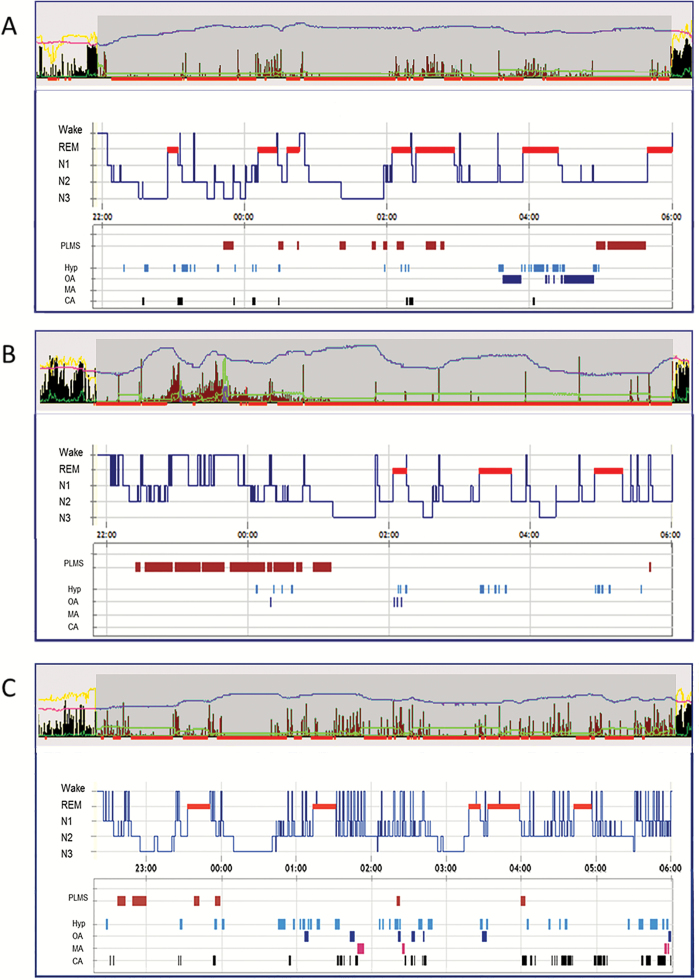Figure 2.
Examples of actigraphy patterns in patients with different type of motor activity during sleep. (A) Patient with REM sleep behavior disorder. The appearance of wrist activity measured by actigraphy (upper panel) is associated with episodes of REM sleep (PSG, lower panel). Activity during non-REM sleep is very low, even in the presence of PLM during sleep (PLMS) or respiratory events. (B) Patient with RLS. Wrist activity measured by actigraphy is associated with PLM during wakefulness (PLMW) and PLMS, occurring during the first half of the night. Of note, activity associated with PLMW has higher amplitude than activity associated with PLMS. During the few respiratory events as well as during REM sleep, no wrist activity has been registered. (C) Patient with SA. Wrist activity measured by actigraphy is associated with respiratory events, in REM and non-REM sleep. High-amplitude activity appears to be associated with arousals. In each part of the figure, the upper panel shows the wrist activity measured by actigraphy. Activity measured with zero crossing mode is represented by a black/brown histogram. Activity measured with proportional integral mode is represented by a green line. The yellow line represents the measured environmental light; the pink/violet line represents the measured distal body temperature. Red bars represent periods automatically marked as probable sleep time. The manually determined nocturnal rest period is represented by the darker grey box. The lower panel represents PSG data, including hypnogram (representing the sleep stages during the night), PLMS, and respiratory parameters. CA, central apneas; Hyp, hypopneas; MA, mixed apneas; OA, obstructive apneas; PLM, periodic leg movements; PLMS, periodic leg movements during sleep; PLMW, periodic leg movements during wakefulness; PSG, polysomnography; RBD, REM sleep behavior disorder; RLS, restless legs syndrome; SA, sleep apnea.

